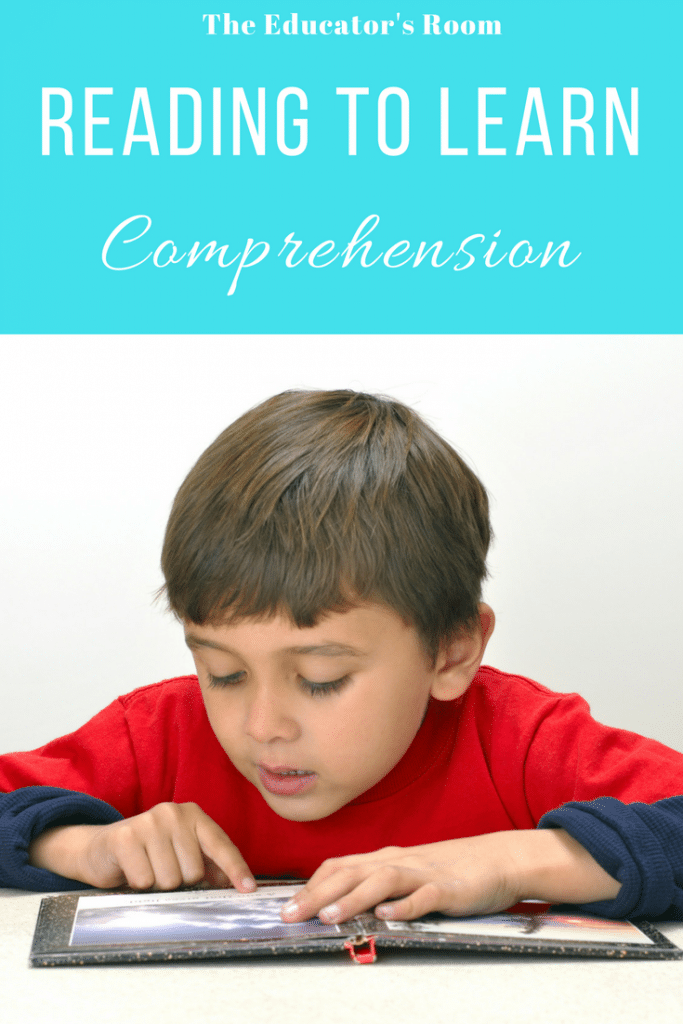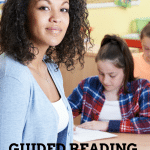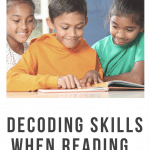The purpose of reading is to learn. A text has the ability to transport us to other times and places, it can expand our knowledge and experience base and it is everywhere in our worlds. Understanding words, texts, passages, poetry, and books is an important part of reading. It is the end goal. To teach your students to read you must know where they are. You must first know their current instructional reading level (accuracy and comprehension combined) as well as their fluency level. If you are unsure how to test your students and gather this data, check out my recent article, “See Jane Read”.
[bctt tweet=”Comprehension practice is best done in small groups.” username=”EducatorsRoom”]
Comprehension practice is best done in small groups. Once you know the levels and abilities of each student, you are ready to create groups. They should be with students who are reading at the same text level and ideally with a similar fluency level. Smaller groups are necessary for students below grade level. Groups of 4-6 students work best for guided reading instruction and book discussion. Students reading above grade level can have a meaningful discussion with groups of up to eight students. These groups will work together to read the same text and learn, practice, and discuss comprehension strategies. Always keep in mind these are fluid groups and students should be monitored regularly.
Reading comprehension needs to be implicitly taught, just as other skills. Struggling readers need modeling and guided practice in connecting to prior knowledge, making connections in a text, understanding main idea, and reflecting after reading. Readers who are on grade level and above grade level will need practice these strategies but can do it with mini lessons and more independent work. Use this scaffolding with your students so everyone is working on the same strategy, but students below grade level in comprehension are being guided and other groups are being monitored.
Prior Knowledge–When I pick up a book I look at the cover, check out the artwork, and look for a synopsis. I read the book jacket to decide interest and purpose. This process needs to be taught to some students. When starting a piece of poetry, text, novel, or classroom reading assignment set the stage. “What can you tell from the title? Have you heard of this author before? What is the purpose of the book? What do you already know about this topic? What do you want to know? Why are you reading?” These are questions to discuss with students who struggle with comprehension.
Next, ask students to write a list of words they would expect to see in the text. This will allow you to set up vocabulary that may be missing. Reading a mystery? Students should have “clue”, “suspect”, and related words on the list. Activating prior knowledge prepares our brains to make new connections and make meaning of the text. Set this stage with your readers. This will help students comprehend as they read.
Visualizing—Our digital world inundates students with images and sounds. Reading comprehension requires students to create these images in their minds. I rarely watch movies that are made from books because my characters do not match those created by Hollywood. It is interesting to see how your students use their prior knowledge to understand and make sense of the author’s descriptions in the text.
[bctt tweet=”When starting this strategy, think-aloud while reading sample paragraphs or poems with students.” username=””]
When starting this strategy, think-aloud while reading sample paragraphs or poems with students. Explain what you are visualizing and how the author’s words brought these images to mind. As students read, have them stop and draw a picture they have in their minds in journals. Students should then go into the text and label the picture with the words from the author they used to create their images. Compare and discuss the images created. Discuss what words the author used that helped students create the images and visualize. This will allow students to reconstruct misconceptions and understand vocabulary as they as read as well. Students can draw images of the main character, the setting, or as a summary of an important chapter or passage. This sketch will stretch their minds to increase comprehension.
Questioning—One thing I love is asking questions. Students do it all the time. Here, the focus should be on meaningful questions about the text. I read the text before class and write my own questions on sticky notes to then model in small group. I find it more meaningful to write my questions than to force an example white thinking on my feet.
Bloom’s Taxonomy is an excellent tool to use with students to teach them higher level thinking skills when reading. To start, students may need you to provide questions for them to ask. Have them provide the page number with the evidence for their answer. Then, have students keep a journal and write the questions they have. If they struggle with this, put a sticky note every few pages and ask them to stop and question. Ask students to identify, help them as needed, the types of questions they are asking. Most students will start with basic recall questions. The goal in this comprehension strategy is to engage students in higher level questioning. To move students here, provide them with stems from Bloom and allow them to use these to form questions that apply, synthesize, and evaluate knowledge. When we question what we read, we comprehend at a higher level.
Inferring—I think of my junior year in high school, reading “classics” and being asked what the author was thinking. How am I to know? I can tell you what they wrote, but I have my own unique experiences and can only tell you what I think the author means. This brought frustration more often than a revelation in my reading. Inferring is the hardest comprehension strategy for students to master.
To help students, provide a rich introduction to the text. Include background knowledge of the era, people alive at that time, or the important theme. Discuss vocabulary and text structure unique and important to the text. “How is this text organized? Why did the author organize it in this way?” Understanding this will help students use the information from the author with their own knowledge to comprehend the meaning behind the words.
Model your thinking and explain how you made the connections and inferences. In journals, have students create charts and write what is in the text (including page number), what they know, and then draw an inference. Discuss these as a group to clarify confusion and allow students to help each other see the meaning to gain comprehension of the text. We make inferences as we read all of the time, but understanding what lead us to the inferences and putting it together is a difficult comprehension strategy to master.
Determining Importance—There seem to be three types of books I read now: Thomas the Train, books for my classroom, and trashy romance novels. When deciding on books for my classroom I look for themes and content that connects to our curriculum. I also select professional resources that will challenge and push me as a fourth-grade teacher. If a book is about Thomas the Train, it is of the utmost importance to my two-year-old. And I love the romance novels because they don’t require me to determine importance at a complex level.
This strategy asks students to decipher between the main idea, details, and interesting facts. Set the stage. “Why are we reading this text? What do we want to learn or gain? Why did the author write this piece?” Give students a purpose for their reading to guide them. In journals, students can keep a list of interesting facts and meaningful facts. This will allow you to understand how they are comprehending information and allow you to guide the discussion. Determining importance is a comprehension skill necessary to understand the important information in the text.
Synthesizing—I recently read a novel about The World Piece game. While I did not learn to teach the game, I was able to understand the meaning behind the game and relate that to my classroom. It was a very inspirational book.
Here you want to discuss with your students what they have learned and what that means to them. Help them make connections to other text and the world. “What does this mean for your life? How does this impact our world? How does this change your thinking?” Students can use sticky notes to mark pages that spark an idea or help them connect to something in their world they can think about in a new way. Synthesizing is the highest level of comprehension. It is being able to use what you have learned from the text and then create something meaningful and new. This level of comprehension allows problems to be solved and new ideas to be born. Synthesizing is reading comprehension’s purpose.
Reading is a personal endeavor in that each student brings of themselves to text and then uses that text to make sense of what they know and have yet to know. Comprehension strategies allow readers to learn as they read. There are students who are able to comprehend and use these strategies with success. For students who struggle, teach these strategies with meaningful text. Allow them to practice the strategies with guidance and discussion. Show them examples of each strategy and show them how this helps with comprehension.
“The more you read the more things you will know. The more you learn the more places you’ll go.” Dr. Seuss







